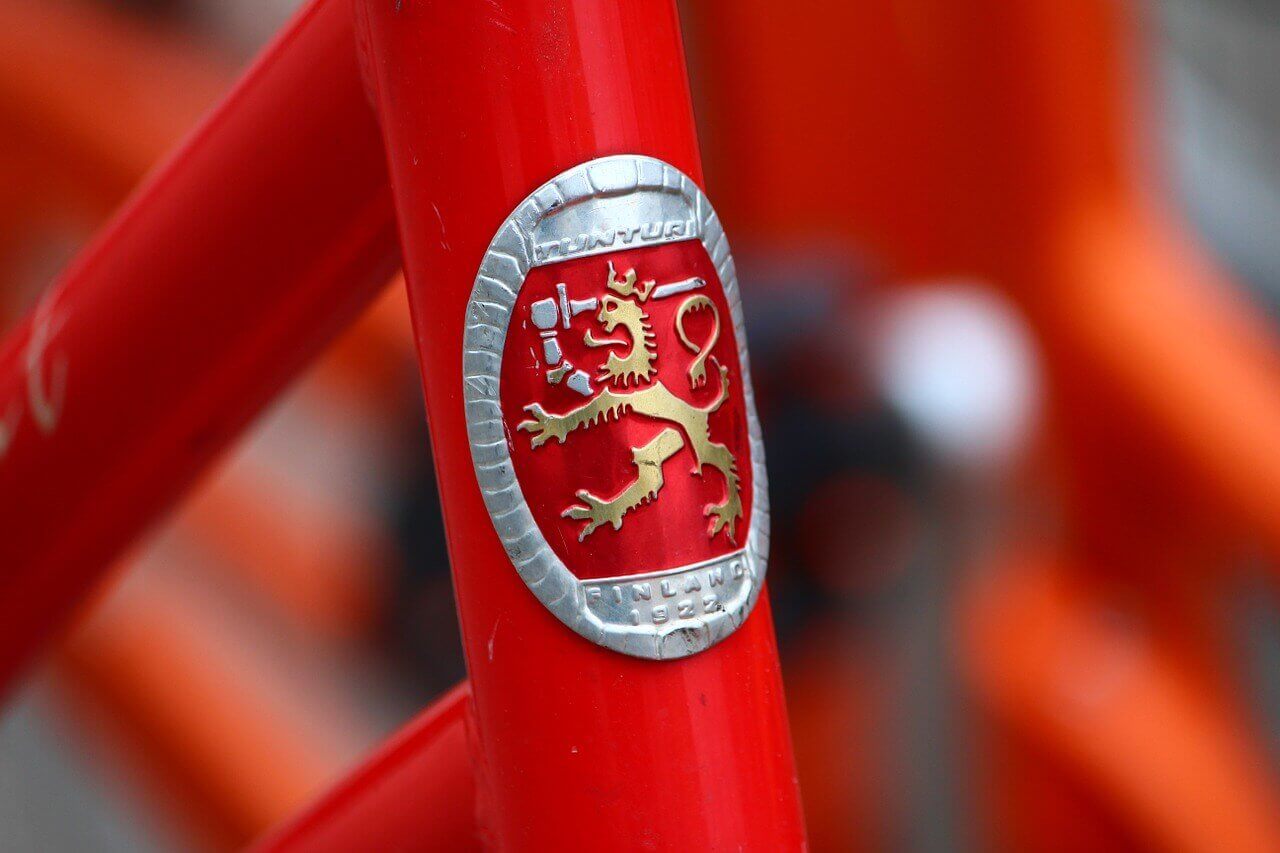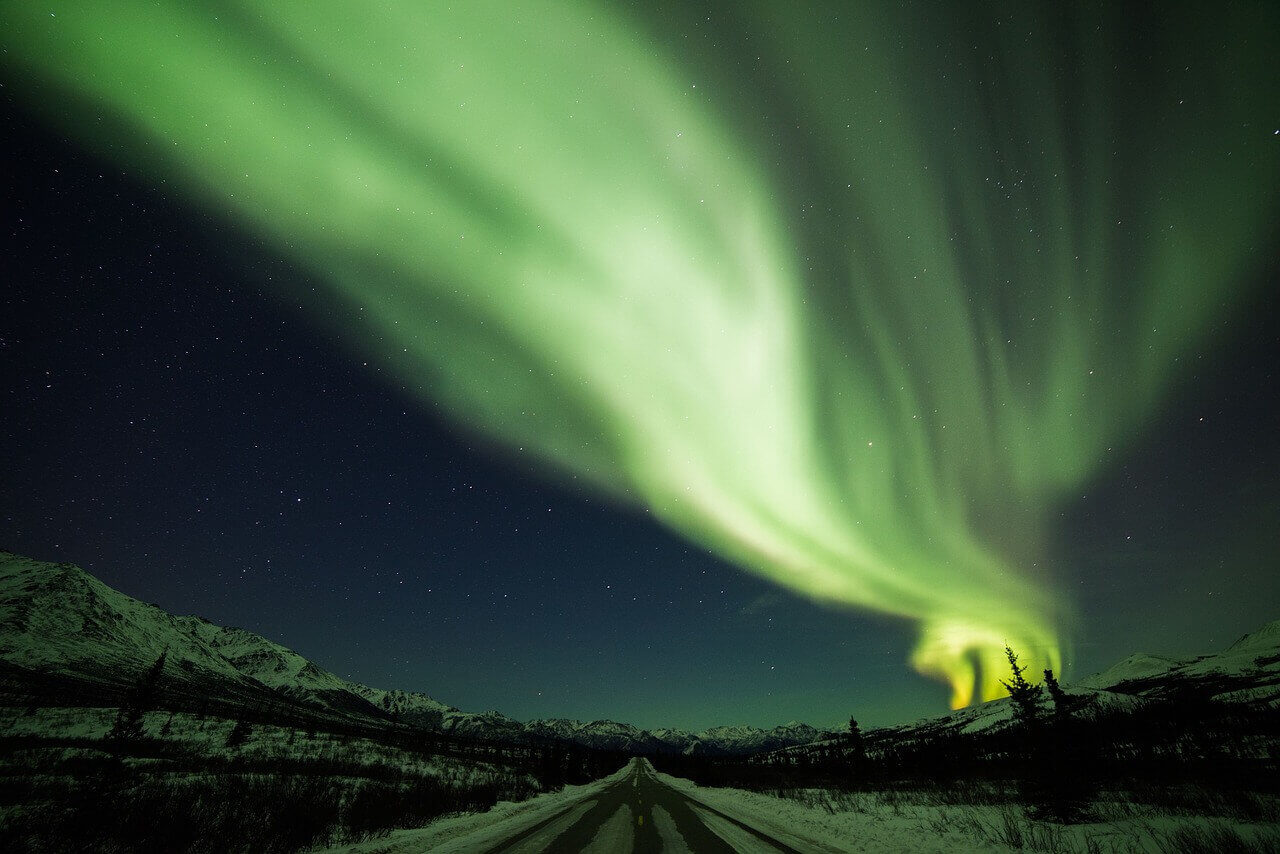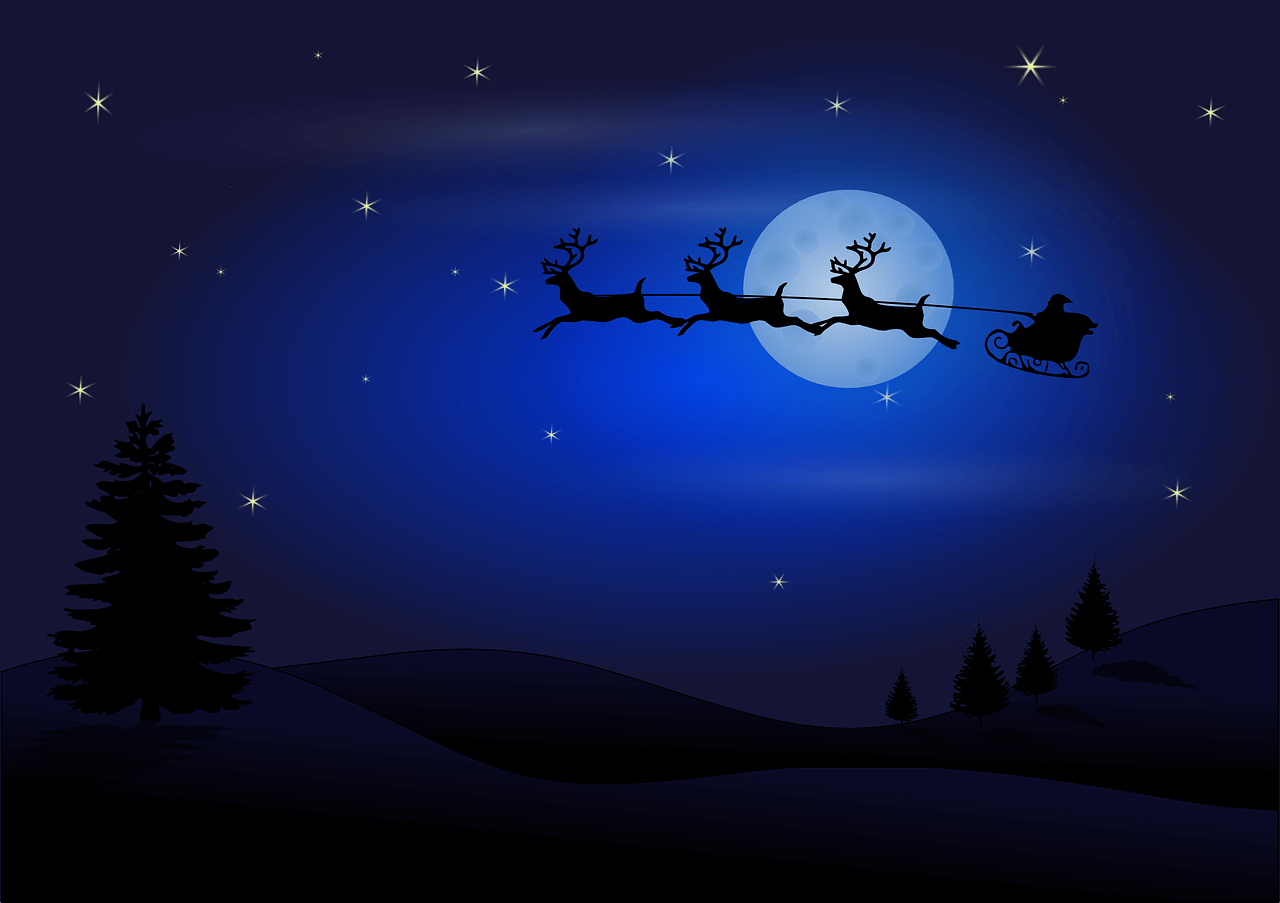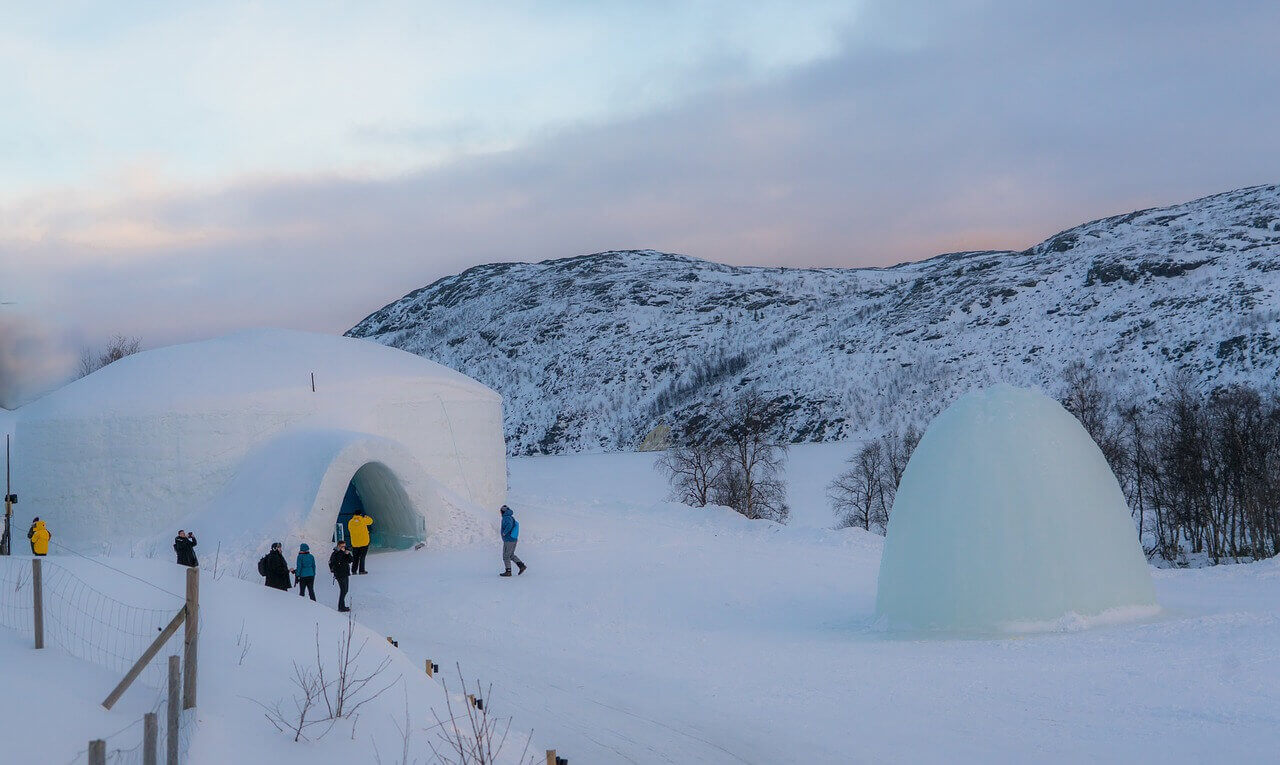Rovaniemi – The home of Santa Claus
High in the north, on the border of Russia, Sweden and Norway, he harnesses the reindeer in front of the sleigh shortly before Christmas and drives off. Because Santa Claus is at home in Rovaniemi. Lapland’s capital also stands for unspoiled landscapes and many impressive natural events such as the Northern Lights or the Midnight Sun.
Rovaniemi and its surroundings
Rovaniemi is the capital of Lapland. Lapland belongs to Finland. Therefore, the national language in Rovaniemi is Finnish. In primeval times, people lived from hunting and fishing where the rivers Ounasjoki and Kemijoki meet.
Today, over 60,000 inhabitants go about their daily lives here in the direct vicinity of the Arctic Circle. For Laplanders, the city is the center where they can find everything to live. Around the city there is an area that is over 8,000 square kilometers. However, the area – which makes Rovaniemi one of the largest cities in Europe – is hardly populated by people.
Rovaniemi is surrounded by several small towns. To the south, a good 80 kilometers away, is Ranua, to the west you will find the towns of Ylitornio and Pello, Kolar borders Rovaniemi to the northwest, and to the east the citizens of Kemijärvi and Posio have settled. It is over 800 kilometers from Rovaniemi to the Finnish capital Helsinki.
Scenically, Rovaniemi and its surroundings are surrounded by many, dense bogs. The trees in the forests are mostly pines. However, there are also a few spruce and deciduous trees among them. The highest point is the Kaihuanvaara with over 350 meters. In addition, Auttiköngäs, a waterfall that is over 16 meters high, also attracts the attention of residents and tourists.
Rovaniemi’s eventful history
The history of Rovaniemi most likely begins towards the end of the last ice age. When the land recovered and became warmer between 7000 and 5800 BC, the first people settled in the area of present-day Rovaniemi.
When about 2000 years later the Finno-Ugric population appeared in the area and mixed with the natives, the Sámi were born. It was not until the early Middle Ages that the land was used for agriculture. People practiced agriculture. Later – at the beginning of the Middle Ages – the Swedes increasingly gained influence on Lapland and thus also on the capital. Rovaniemi is first mentioned in documents in connection with a land purchase.
At the beginning of the 17th century the first church was built in Rovaniemi. After it was burned down during a raid of the Karelians, the responsible people rebuilt it in 1622 and 66 years later replaced it with a new building. In 1785 Rovaniemi received its first, own parish. Until then it was subordinated to the Swedish diocese of Turku.
In the late 1920s, Rovaniemi was granted an independent market area. Even before the 2nd World War raged in Finland, the capital of Lapland was founded. A year later, soldiers of the Soviet Union flew over Rovaniemi and bombed the city.
Later – in the years 1941 to 1944 – Lapland and its capital were under German command. Hitler’s helpers set up a center here and held the town with 15000 soldiers at times. The worst time of the war was experienced by the inhabitants in October 1944. When the German Wehrmacht left, it destroyed almost all the buildings in the city.

In the early 1950s, Rovaniemi was rebuilt. In 1960 the place received the right to call itself a town. Since then, more and more guests are attracted here.
The journey to Rovaniemi
The capital of Lapland can be reached by several routes. By plane you can get there directly from London Gatwick Airport. By train it is possible to travel from Helsinki to Rovaniemi. Trains run several times a day to and from Rovaniemi. By intercity bus and with a private car you can get to your destination from all directions.
Rovaniemi – Sights and specials
Rovaniemi is very diverse in what it offers worth seeing. If you want to see something here, you will get something to see.
- German Military Cemetery
German soldiers who fell in Rovaniemi during World War 2 were buried here. - Museum of local history
This museum provides information about the life of a rich Finnish farmer over 100 years ago. Very vividly depicted here is how people at that time pursued hunting or lived from fishing and livestock. - Rovaniemi Church
It is also worth a look. Completed in 1950, the interior of the church behind the altar contains its visitors captivated by a very large fresco. The opening hours of the church are daily from 09:00 to 21:00. - Sukulanrakka
Just under 30 kilometers from Rovaniemi, those interested can admire potholes in the rocky mountain slopes of Sukulanrakka. The so-called devil’s jugs were discovered about 10,000 years ago. - Aurora Borealis
Great views get to see the viewers of the Northern Lights. It can be seen in Rovaniemi up to 200 nights a year. The best time to see the play of lights in the sky is between mid-August and mid-April in the capital of Lapland. All that is required is a dark, clear sky and a suitable location that allows an unobstructed view of the sky. It should be remembered, however, that no one can guarantee that the Northern Lights will actually be seen.

- Midnight Sun
From the end of May until the first days of August the nights here are white and bright. The sun shines 24 hours a day. For connoisseurs enough time to pursue activities such as horseback riding, boating or jet skiing. - Santa Claus Village
The Arctic Circle is eight kilometers away in Santa’s Village. The crossing is rewarded with a certificate. It is not a priority how the Arctic Circle is crossed. You can walk, hop, or ride a bike over it. Even on underground path through the cave of Santa Claus can cross the Arctic Circle.

Santa Claus has been at home in Rovaniemi since 2010. At that time, the capital of Lapland was declared the official hometown of Santa Claus. The door to his office – located right on the Arctic Circle – is always open and open to everyone. Little visitors can meet him every day and tell him their wishes.
But Santa Claus Village – the name of the Santa Claus Village in Rovaniemi – also has some surprises in store for the grown-ups. Fans of the most wonderful time of the year can admire Santa’s own main post office here and feel the Christmas magic all year round. Visitors also have the opportunity to do their first Christmas shopping here. Through the main post office, purchases can be delivered to your home at the desired time.
The way to Santa Claus is easy to find. Santa Claus Village is three kilometers away from the airport in Rovaniemi. From the city center, it is best to take the Santa Claus bus, which takes guests to Santa every hour. However, you can also take a cab the eight kilometers or take a short walk there.
Since Santa is on the road a lot, interested parties should inquire about the opening hours. Santa Claus does not charge admission to his guests for a short visit.
If you want to stay longer and spend the night here, you have several alternatives. Santa Claus Holiday Village offers six nights of accommodation for a family with two children for just under 600 euros. However, an overnight stay is also possible in the immediate vicinity of Santa’s office.

The Glass Resort consists of glass apartments, the furnishings of which have been decorated with the region’s handicrafts. Both the large windows and the glass roof offer residents a dreamlike view of the surroundings. About ten minutes from Santa’s Village, Apukka Resort also promises pleasant nights. Here visitors can spend the night in real ice huts. Besides, at Appuka Resort it is possible to take part in husky safari or snowshoeing.
More accommodation in Rovaniemi
If you don’t want to stay in Santa’s Village or the immediate area, you have the option of renting a cottage, booking a room in a hotel or staying in a private room. Depending on the equipment of the rooms, the accommodation of a family with two children for a week costs between 330 euros and 900 euros.
For the camper lovers, Rovaniemi offers several options to park their camper and spend a quiet night.
Visitors to Rovaniemi should also not miss the delights of Lapland cuisine. The reindeer has its regular place on many plates. Fried, with mashed potatoes and cranberry jam, it is one of the classic dishes. You can eat the reindeer as fillet, minced meat or even sausage. In addition, Laplanders are known for their fish creations from salmon, trout, pike-perch and still other fish. If you want to have a beer or a wine afterwards, you should pay attention to the Finnish word “Baari”. It can be found in all establishments where alcohol is served.

